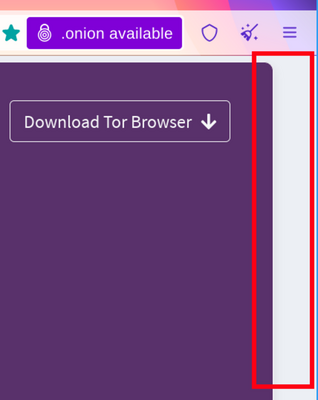Comprendere il browser fingerprinting
Il Browser fingerprinting è la raccolta sistematica di informazioni riguardanti il browser web al fine di formulare ipotesi plausibili circa la sua identità o le sue caratteristiche.
Tutte le impostazioni e funzionalità del browser creano un "browser fingerprint".
La maggior parte dei browser crea inavvertitamente un'impronta digitale unica per ogni utente, che può essere tracciata su Internet.
Per informazioni più approfondite sul fingerprinting del browser, consultare questi articoli del Tor Blog: Browser Fingerprinting: An Introduction and the Challenges Ahead e Tor Browser: a legacy of advancing private browsing innovation.
Perché il browser fingerprinting minaccia la privacy online?
Innanzitutto, non c'è la necessità di chiedere il permesso all'utente per effettuare la raccolta di questa informazione.
Ogni script attivo nel browser può costruire silenziosamente un fingerprint del dispositivo senza che l'utente se ne accorga.
In secondo luogo, se un attributo dell'impronta digitale del browser è unico o se la combinazione di più attributi è unica, il dispositivo può essere identificato e tracciato online.
Ciò significa che anche senza cookie, un dispositivo può essere tracciato utilizzando la sua impronta digitale.
Come Tor Browser riduce il fingerprinting
Tor Browser è specificamente progettato per ridurre al minimo l'unicità dell'impronta digitale di ciascun utente attraverso varie metriche.
Sebbene sia praticamente impossibile rendere identici tutti gli utenti di Tor Browser, l'obiettivo è ridurre il numero di “secchi” distinguibili per ogni metrica.
Questo approccio rende più difficile tracciare efficacemente i singoli utenti.
Alcune proprietà, come il sistema operativo e la lingua, sono necessarie per le funzionalità e non possono essere completamente nascoste o camuffate.
Invece, Tor Browser limita la varietà di questi attributi per ridurre la distintività.
Ad esempio, limita l'enumerazione dei caratteri e applica il fallback dei caratteri, standardizza le dimensioni dello schermo e delle finestre utilizzando il letterboxing e limita la varietà delle lingue richieste a un piccolo insieme predefinito.
L'obiettivo principale delle protezioni anti-fingerprinting di Tor Browser è quello di rendere significativamente più difficile la raccolta di informazioni sufficienti a identificare univocamente gli utenti, migliorando così la privacy senza compromettere le funzionalità necessarie.
Funzionalità anti-fingerprinting in Tor Browser
Letterboxing
Per evitare il fingerprinting basato sulle dimensioni dello schermo, Tor Browser inizia con una finestra di contenuto arrotondata a un multiplo di 200px x 100px.
La strategia consiste nel raggruppare tutti gli utenti in un paio di gruppi per rendere più difficile individuarli.
Finora funziona, finché gli utenti non iniziano a ridimensionare le finestre (ad esempio, massimizzandole o passando alla modalità a schermo intero).
Tor Browser viene fornito con una difesa di fingerprinting anche per questi scenari, che si chiama Letterboxing, una tecnica sviluppata da Mozilla e presentata nel 2019.
Funziona aggiungendo margini alla finestra del browser, in modo che la finestra si avvicini il più possibile alle dimensioni desiderate, mentre gli utenti si trovano ancora in un paio di gruppi di dimensioni dello schermo che impediscono di individuarli con l'aiuto delle dimensioni dello schermo.
In parole povere, questa tecnica crea gruppi di utenti di determinate dimensioni dello schermo e rende più difficile individuare gli utenti in base alle dimensioni dello schermo, poiché molti utenti avranno le stesse dimensioni.

Spoofing dell'User-Agent e del sistema operativo
La stringa User-Agent è un valore che i siti web possono utilizzare per identificare dettagli relativi al browser, al sistema operativo (OS), all'architettura della CPU, al fornitore e alla versione.
Poiché queste informazioni possono rivelare quale sistema operativo o dispositivo sta utilizzando un utente, sono state utilizzate per il browser fingerprinting, consentendo ai siti web o ai tracker di individuare potenzialmente gli utenti.
Tor Browser risolve questo problema falsificando l'User-Agent. Gli utenti non possono scegliere un sistema operativo specifico né tentare di imitare tutte le piattaforme possibili.
Invece, Tor Browser standardizza i valori User-Agent per ridurre l'unicità ed evitare di creare un falso senso di privacy:
- Tutte le finestre vengono visualizzate come Windows 10.
- Tutti i macOS vengono visualizzati come OS X 10.15.
- Tutti i dispositivi Android con Android 10.
- Tutti gli altri sistemi come tutte le distribuzioni Linux (comprese Tails e Qubes), *BSD e altri sistemi operativi sono raggruppati insieme e riportati come “Linux con X11”.
- Anche tutti gli altri dettagli (come l'architettura) sono normalizzati per piattaforma.
In questo caso, la strategia di resistenza alle impronte digitali nel browser Tor consiste nel proteggere i valori reali dell'User-Agent tramite lo spoofing, ma anche nell'avere un set di utenti sufficientemente ampio.
User-Agent viene inviato ai siti web come intestazione HTTP ed è disponibile per JavaScript come navigator.userAgent.
Le incongruenze in questi valori possono indurre i sistemi anti-bot e anti-frode a classificare gli utenti Tor come bot e a rifiutare le loro richieste, compromettendo così l'usabilità per gli utenti del browser Tor.
Alcuni strumenti per la privacy o utenti suggeriscono che far apparire tutti gli utenti come Windows offrirebbe la copertura migliore.
Tuttavia, non è possibile effettuare uno spoofing perfetto in tutti i contesti del browser e spesso è possibile utilizzare metodi di fingerprinting attivi (utilizzando font, caratteristiche, comportamento, con o senza JavaScript, ecc.) per dedurre aspetti dell'hardware o del sistema operativo.
Tor Browser non consente agli utenti di selezionare il sistema operativo che desiderano utilizzare.
Questo è intenzionale: qualsiasi opzione di scelta renderebbe gli utenti ancora più unici e quindi più facili da identificare.
Il piccolo insieme di opzioni standardizzate è fondamentale per mantenere gli utenti uniti, massimizzando la privacy per tutti.
Altre funzionalità anti-fingerprinting
Oltre al letterboxing, Tor Browser impiega molte altre funzioni per attenuare il fingerprinting del browser e proteggere la privacy degli utenti.
Queste funzionalità includono il blocco dell'estrazione delle immagini Canvas, l'integrazione di NoScript e l'isolamento di prima parte.
Per un elenco completo delle funzionalità, leggere il documento di progettazione e implementazione di Tor Browser.